A Home Baker's Guide To The Many Types of Vanilla
Choose the right type of vanilla for your next recipe.
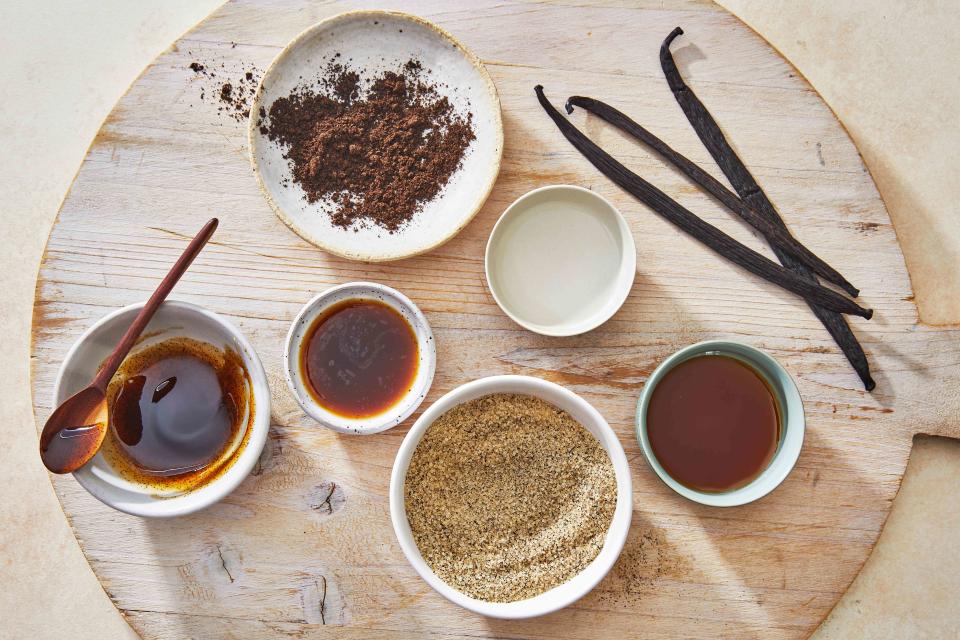
Caitlin Bensel; Food Stylist: Torie Cox
When it comes to adding great flavor and depth to a variety of recipes, vanilla is most often the key ingredient. Everything from cakes and cookies to French toast, homemade ice cream, and banana cream pie calls for vanilla. And while vanilla extract is typically listed in a recipe’s ingredients list, there are many other types of vanilla to consider.
Below, learn all about where vanilla comes from, the different types of vanilla, and how to substitute one type of vanilla for another.
What Type of Plant Does Vanilla Come From?
Vanilla beans, or pods, are used to make vanilla extract, vanilla sugar, vanilla powder, and more. They come from a type of orchid, vanilla planifolia, which grows as a long vine. Because it’s a tropical plant with specific needs, the vanilla orchid won't grow just anywhere.
"Vanilla beans are grown close to the equator where conditions are favorable: lots of humidity, higher temperatures, and plenty of sunlight," says Trung Vu, chef-instructor of pastry and baking arts at the Institute of Culinary Education (ICE).
Vanilla Origins
Because of the specific conditions needed to grow vanilla, there are three main regions where beans are harvested: Madagascar, Tahiti, and Mexico. According to Vu, most vanilla beans utilized today come from Madagascar.
"These beans tend to have high amounts of vanillin, the classic vanilla flavor we associate with notes of sweetness," he says. "But Tahitian vanilla beans are also highly prized for their floral notes."
Types of vanilla, such as extracts, paste, and powder, are expensive due to the labor and process involved in making these products.
"There are limited tropical regions in which they can grow," says Vu. "They are an extremely labor intensive crop, and they can be highly susceptible to crop failure due to storms, which have hit often in recent years sending vanilla prices even higher."
Types of Vanilla
Vanilla extract is one of the most common and approachable types of vanilla to use. However, there are several other types that range in price point, accessibility, and use.
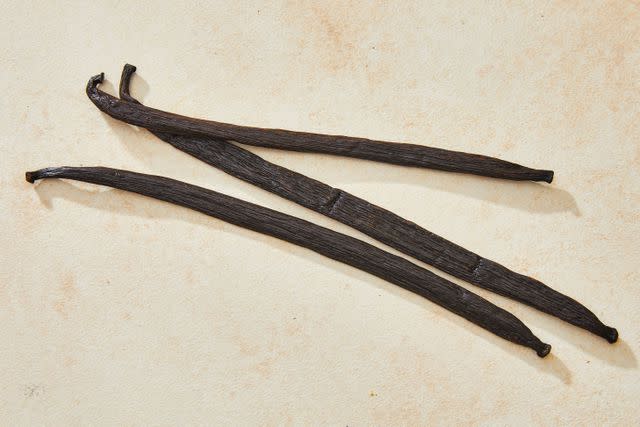
Caitlin Bensel; Food Stylist: Torie Cox
Vanilla beans
Vanilla beans are the purest option for adding vanilla flavor to any recipe, but they’re also the most expensive. Carefully score vanilla beans with a sharp knife and scrape out the seeds to add to your mixture.
Not all beans are created equal, however. There are multiple grades of vanilla, which are classified based on texture and flavor.
Grade A Vanilla: According to Vu, these vanilla beans have more moisture, making them plump and easy to scrape.
Grade B Vanilla: These beans are drier than Grade A vanilla beans, making them harder to scrape. But that doesn’t mean they lack flavor. Typically, these are used for making vanilla extract or powder. "Because they are drier, it also means that their vanillin is more concentrated, which makes them very suitable for these flavor extraction methods," says Vu.
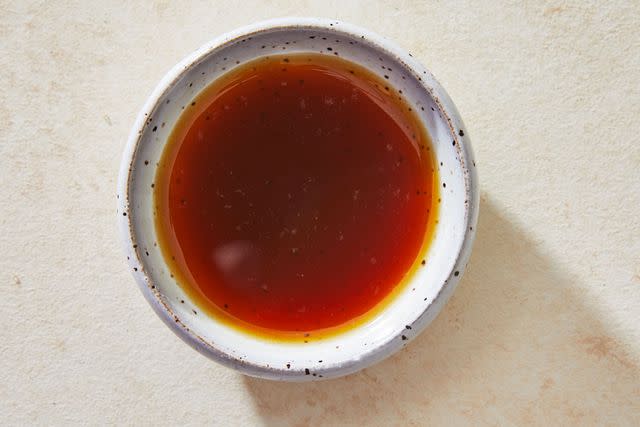
Caitlin Bensel; Food Stylist: Torie Cox
Pure vanilla extract
Pure vanilla extract is a liquid made by soaking vanilla beans in alcohol and water, extracting the color and flavor from the bean.
Related:How To Make Homemade Vanilla Extract
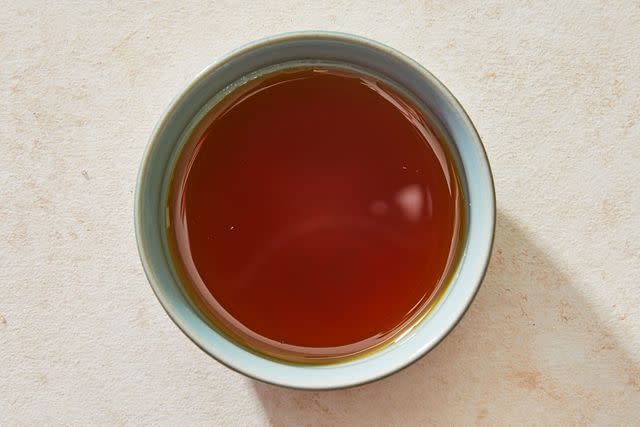
Caitlin Bensel; Food Stylist: Torie Cox
Imitation vanilla extract
Imitation vanilla extract is cheaper than pure vanilla extract. It is made with synthetic vanillin, diluted, and often includes caramel coloring.
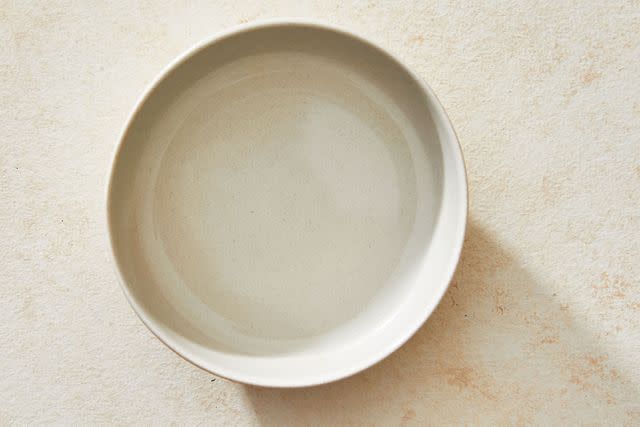
Caitlin Bensel; Food Stylist: Torie Cox
Clear vanilla extract
If you need to add vanilla flavor to a mixture without imparting color, clear vanilla extract is the key. This is an artificial vanilla option made with vanillin, but it’s incredibly helpful for cake decorators who need stark white vanilla frosting.
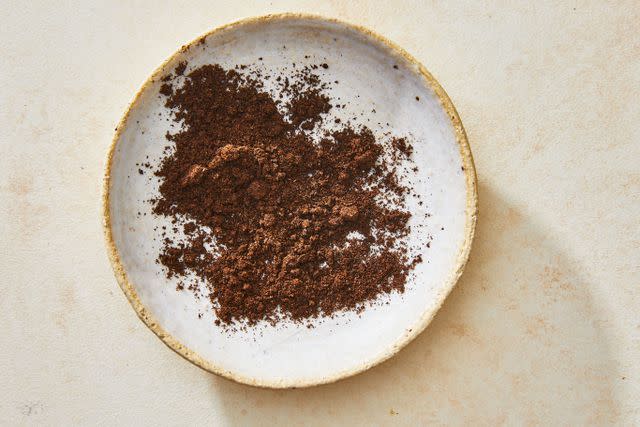
Caitlin Bensel; Food Stylist: Torie Cox
Vanilla powder
Vanilla powder is made by grinding dried vanilla beans. The powder is typically a darker shade and can be used in place of extract.
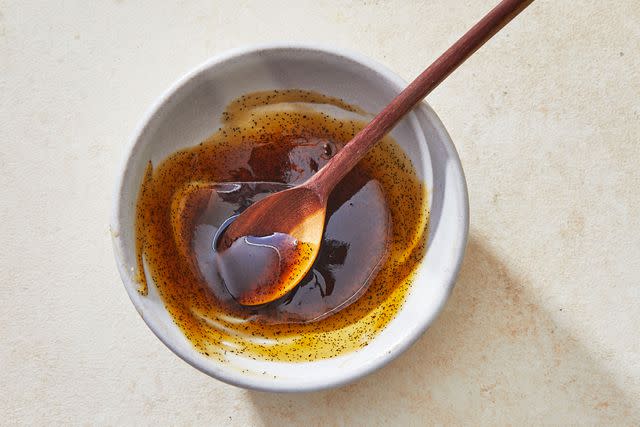
Caitlin Bensel; Food Stylist: Torie Cox
Vanilla bean paste
Vanilla bean paste is a mixture of vanilla bean powder and pure vanilla extract. Its texture isn’t terribly thick, and it can be measured with a measuring spoon to be mixed into recipes. The paste offers incredibly concentrated flavor without the hassle of storing or scraping whole vanilla beans.
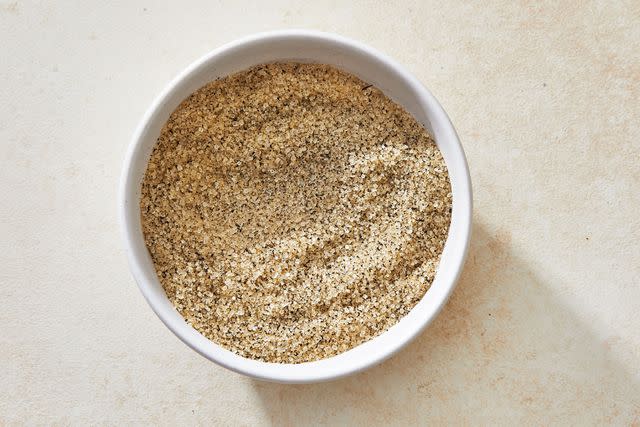
Caitlin Bensel; Food Stylist: Torie Cox
Vanilla sugar
Vanilla sugar is granulated sugar that has been infused with vanilla beans for exceptional flavor. It is lighter in color than vanilla powder, because of the mixture of ingredients. Vanilla sugar can be found at specialty groceries stores, but you can also make your own.
Vanilla salt
Vanilla salt is another infusion that combines sea salt and vanilla beans. It can be made by infusing coarse, flaky, or fine sea salt to add great flavor.
Frequently Asked Questions
What is the best type of vanilla extract?
The best type of vanilla extract is pure vanilla extract, rather than imitation. This will add the most potent vanilla flavor to anything you're making.
In finding the best option, look at the ingredients label to be sure there isn't a long list of additives or fillers. Brands such as Nielsen Massey, Rodelle, and Beyond Good are excellent choices for great flavor.
Can you sub vanilla bean paste for extract?
Love those little bean specks and want them to be seen in your desserts? Vanilla bean paste can easily be substituted for vanilla extract. Vu suggests using a one-to-one ratio. "A tablespoon of vanilla bean paste can also be substituted for one vanilla bean," he adds.
Does vanilla extract expire?
Vanilla extract is made by using a base of alcohol. According to Vu, because it’s made with alcohol, there’s no need to worry about safety if it’s used after the expiration date. However, the flavor may be weaker due to evaporation over time.
For more Southern Living news, make sure to sign up for our newsletter!
Read the original article on Southern Living.

